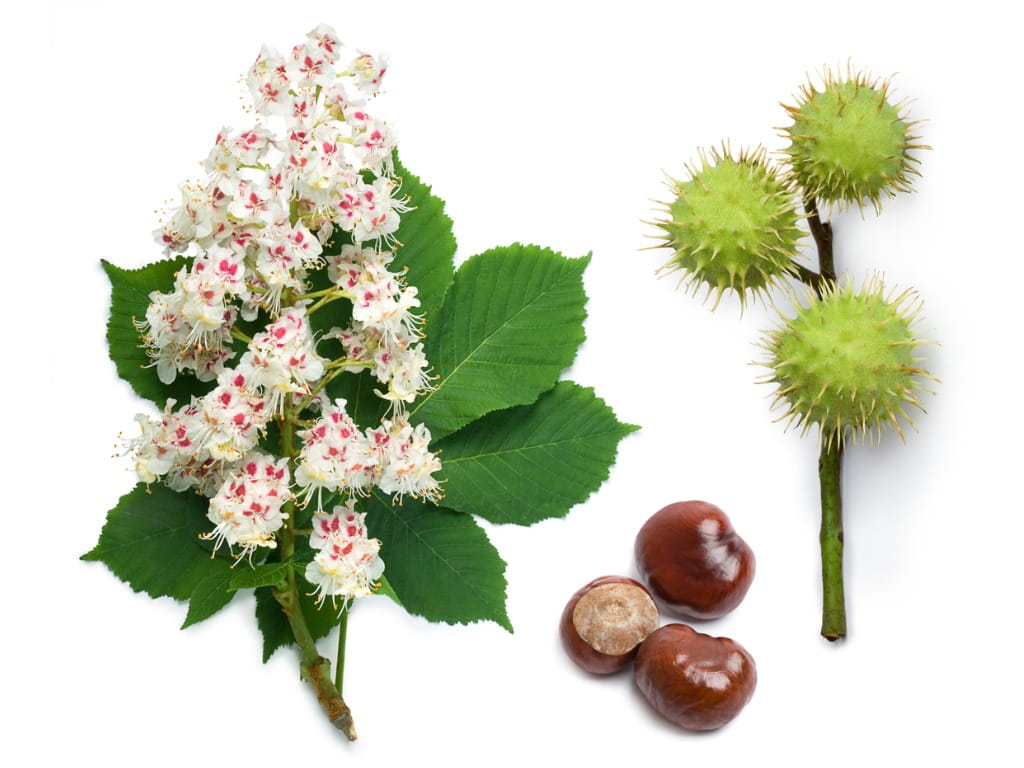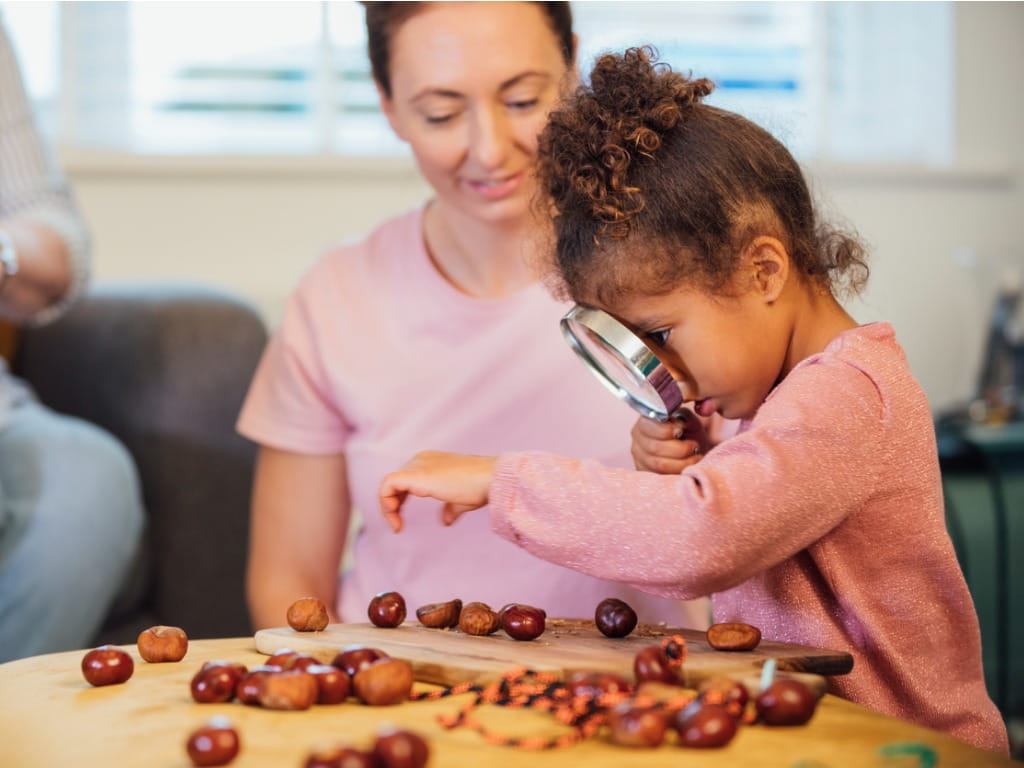Horse Chestnuts are Toxic

The Bottom Line
All parts of the horse chestnut tree are toxic, but the greatest concern is for horse chestnut seeds. These can be easily mistaken for edible chestnuts. Horse chestnut seed pods usually contain only one seed, while edible chestnut pods contain multiple seeds. Eating horse chestnuts can result in serious stomach upset.

The Full Story
Before you sample that random nut you found outside, first check to see if it is an inedible horse chestnut. The horse chestnut tree (Aesculus hippocastanum) produces seedpods that are often mistaken for pods from edible chestnut tree species. Thankfully, there are a few ways to tell horse chestnuts apart from edible chestnuts. Edible chestnuts are covered in a spiky pod that looks furry. The seed pod contains multiple nuts; the nuts have a pointed end or tassel, and they taste starchy. Horse chestnut seed pods have spikes that are spaced more widely apart and typically only contain one nut. Horse chestnuts are completely round, leathery, have a pale/white spot on them, and are very bitter (but please don’t taste them to find out). Because of the pale spot on the nut, they are sometimes called "buckeyes."
Horse chestnuts contain a toxin called saponin aesculin that makes all parts of these trees poisonous. This toxin isn’t absorbed very well, so it tends to produce mild to moderate symptoms when people eat horse chestnuts. The most common symptom is stomach irritation. However, it is important to know that there have been reports of children who have eaten horse chestnuts and who felt weak, had difficulty walking, became drowsy, experienced paralysis, and showed muscle twitching in addition to major stomach irritation.
There are also some reports of severe symptoms occurring in adults. Over a 29-year period in Switzerland, there were three cases of horse chestnut poisoning that resulted in severe symptoms within 15–30 minutes after the swallowing of 1–4 seeds. These patients experienced redness, facial swelling, massive vomiting, low blood pressure, and collapse. One patient experienced a severe symptom called angioedema, which was swelling of the lower face that blocked the airway.
If someone eats a horse chestnut, symptoms most often develop 15 minutes to 3 hours after the exposure. The symptoms can last 2–3 days after they start. If someone has unintentionally eaten part of a horse chestnut, you can help them by doing the following:
- Gently wipe out their mouth.
- Have them rinse with water and spit to remove remaining plant material from their mouth.
- They can drink a few small sips of water to rinse the remaining material into their stomach.
- If they are experiencing nausea or vomiting, keep them hydrated with small sips of clear fluids.
- Check the webPOISONCONTROL® online tool for additional guidance or call Poison Control at 1-800-222-1222. Both options are free for the public, and available 24 hours a day.
Lindsy Liu, PharmD
Certified Specialist in Poison Information
Poisoned?
Call 1-800-222-1222 or
Prevention Tips
- Do not allow children and pets to eat the contents of fallen seed pods.
- Have all your plants (indoor and outdoor) correctly identified by a knowledgeable expert.
- Never eat an unknown plant or seed without verification from a clear field guide or someone with experience.
- If you are interested in foraging for wild plants, join an organization with experienced members.
This Really Happened
A mother called Poison Control after she and her 8-year-old son ate nuts that were given to the boy by his piano teacher. They thought that they were edible nuts, and they each tried one. The nuts were very bitter, and they spit them out and called Poison Control. Based on the description of the nuts, Poison Control informed the family that they were horse chestnuts and that a taste amount should not result in any severe issues. Poison Control recommended that they gently sip on fluids to rinse the remaining plant material into their stomachs. Later that day, Poison Control checked on the family and both mother and son had no symptoms.
A man boiled and ate four horse chestnuts. Thirty minutes later, he researched the nuts online and realized they were horse chestnuts so he called Poison Control. At the time of the call he reported having an upset stomach and he that had eaten some bread. Poison Control advised that the horse chestnuts are expected to cause stomach pains, nausea, vomiting, or diarrhea and recommended gently diluting the ingestion with small sips of water. Later that night Poison Control checked on the man, and he reported that his symptoms only lasted for 4 hours.
For More Information
References
Zajac M, Wisniewski M, Sein Anand J. [Intoxication by powdered seeds of horse chestnut (Aesculus hippocastanum) used nasally as snuff – a case report]. Przegl Lek. 2014;71(9):502–3. Polish
Poisoned?
Call 1-800-222-1222 or
Prevention Tips
- Do not allow children and pets to eat the contents of fallen seed pods.
- Have all your plants (indoor and outdoor) correctly identified by a knowledgeable expert.
- Never eat an unknown plant or seed without verification from a clear field guide or someone with experience.
- If you are interested in foraging for wild plants, join an organization with experienced members.
This Really Happened
A mother called Poison Control after she and her 8-year-old son ate nuts that were given to the boy by his piano teacher. They thought that they were edible nuts, and they each tried one. The nuts were very bitter, and they spit them out and called Poison Control. Based on the description of the nuts, Poison Control informed the family that they were horse chestnuts and that a taste amount should not result in any severe issues. Poison Control recommended that they gently sip on fluids to rinse the remaining plant material into their stomachs. Later that day, Poison Control checked on the family and both mother and son had no symptoms.
A man boiled and ate four horse chestnuts. Thirty minutes later, he researched the nuts online and realized they were horse chestnuts so he called Poison Control. At the time of the call he reported having an upset stomach and he that had eaten some bread. Poison Control advised that the horse chestnuts are expected to cause stomach pains, nausea, vomiting, or diarrhea and recommended gently diluting the ingestion with small sips of water. Later that night Poison Control checked on the man, and he reported that his symptoms only lasted for 4 hours.
